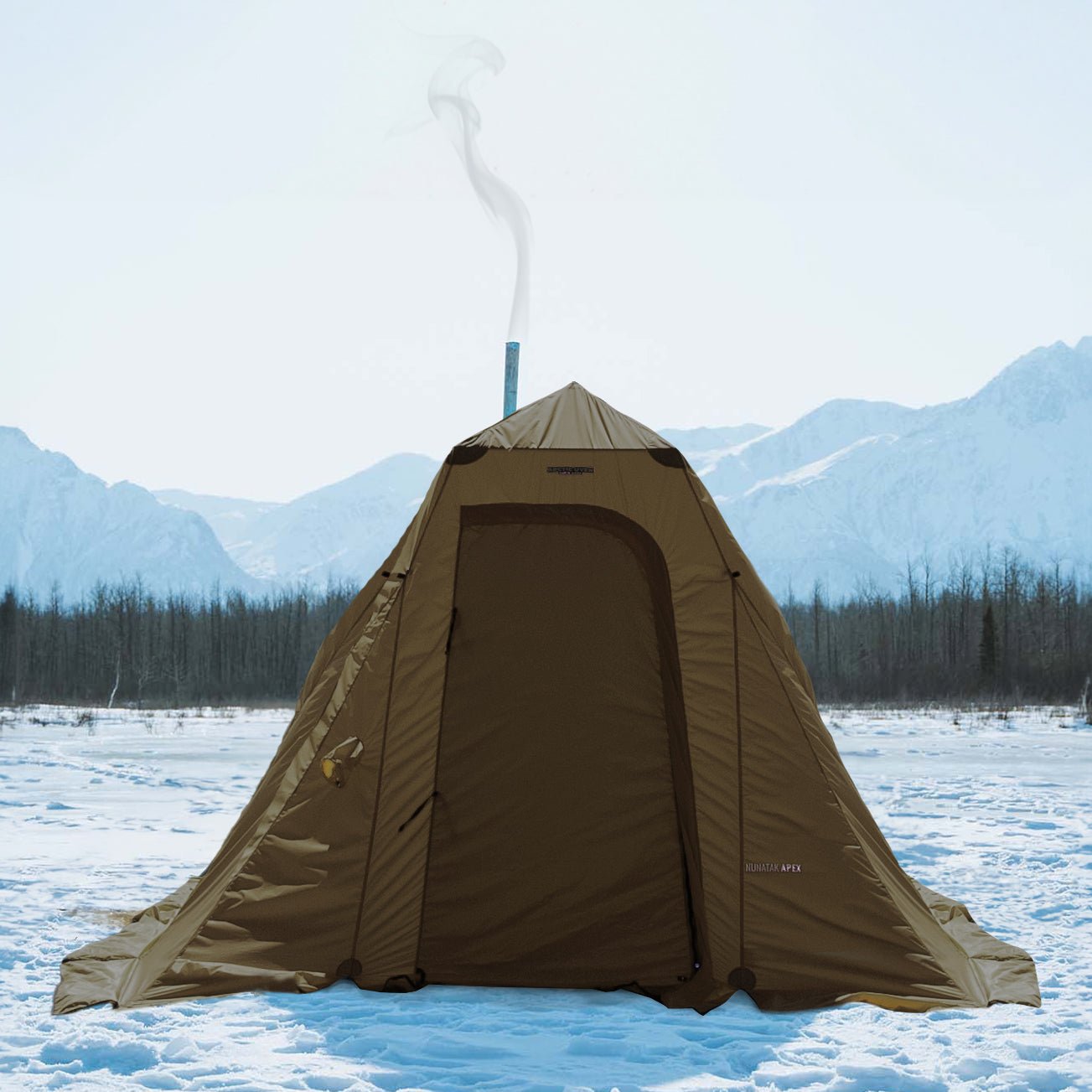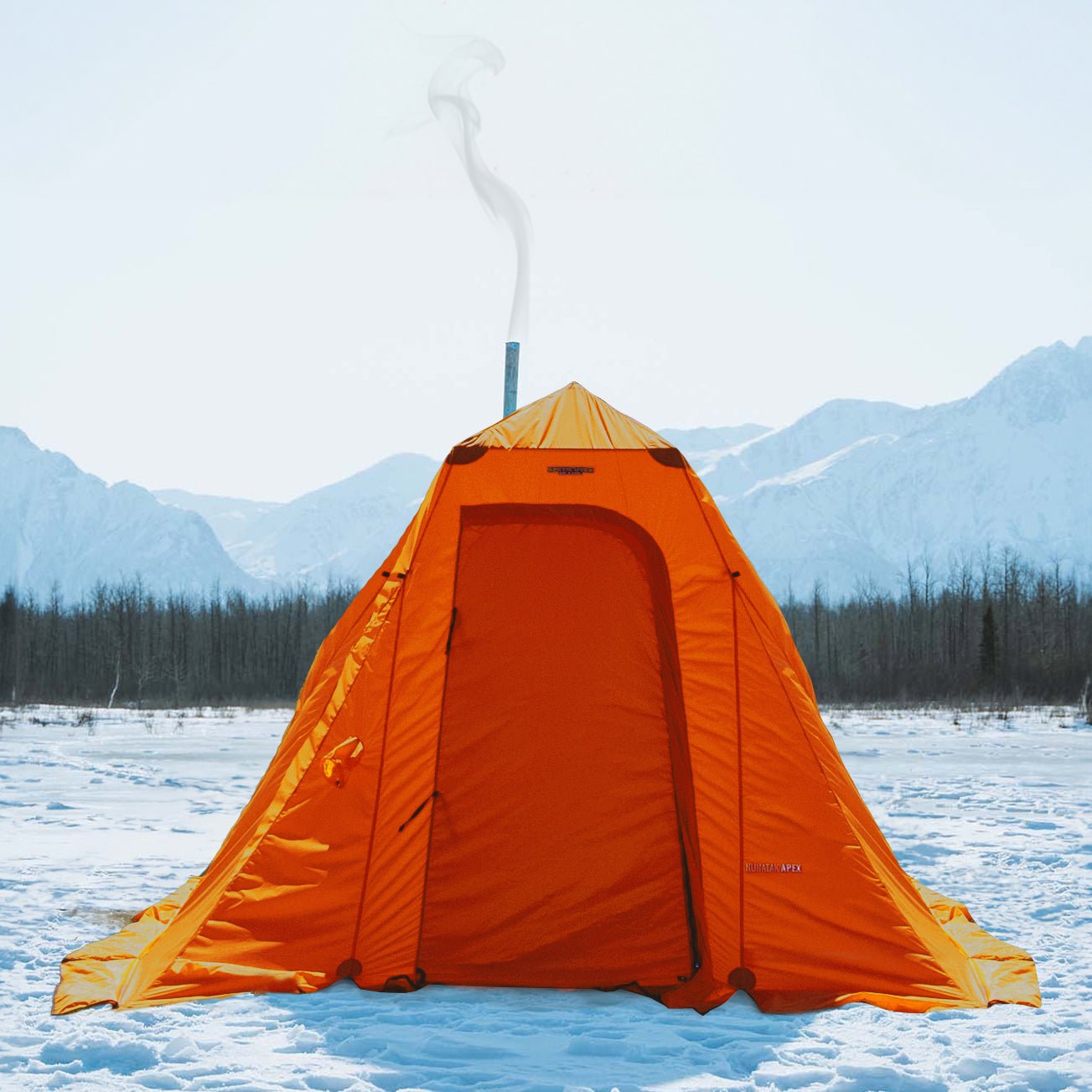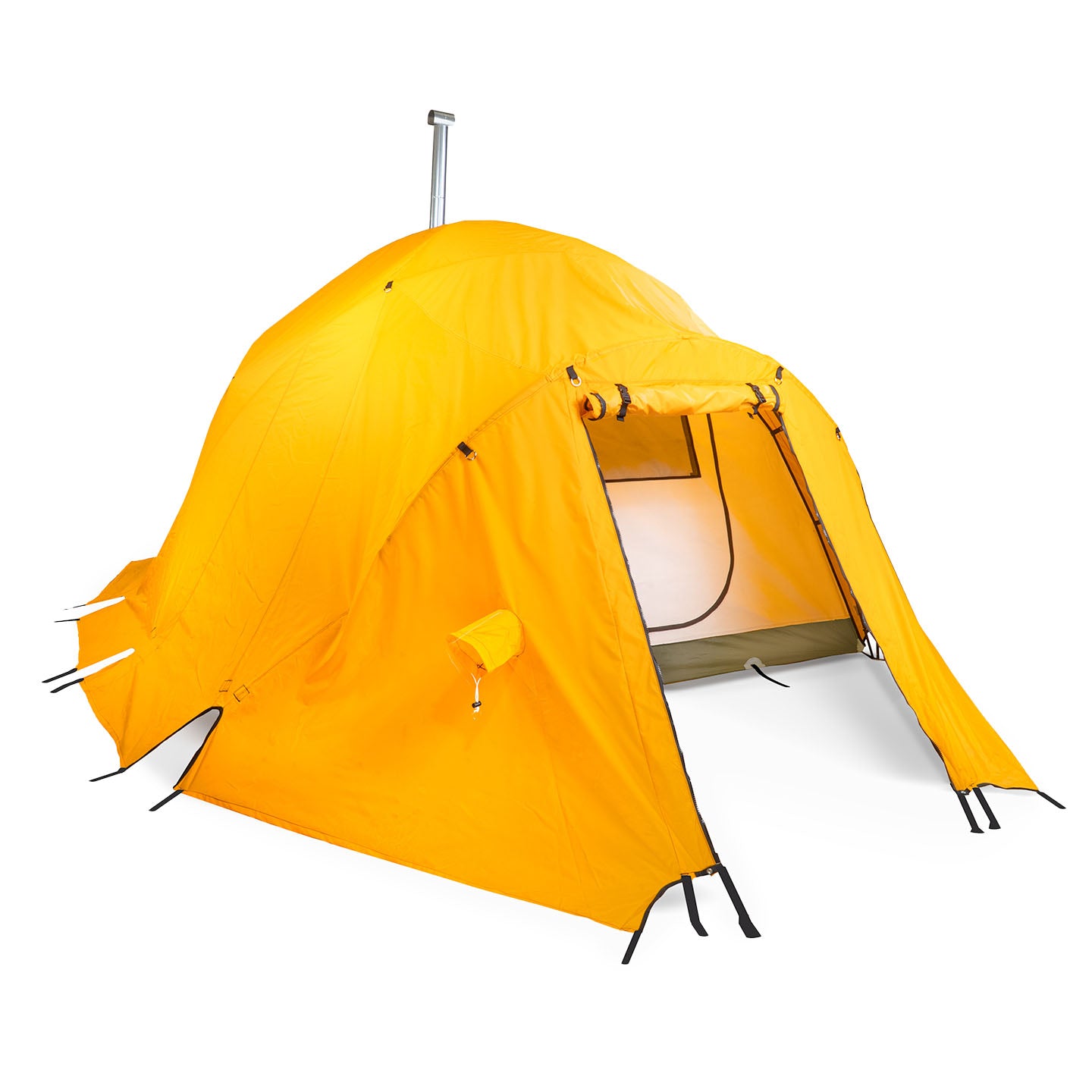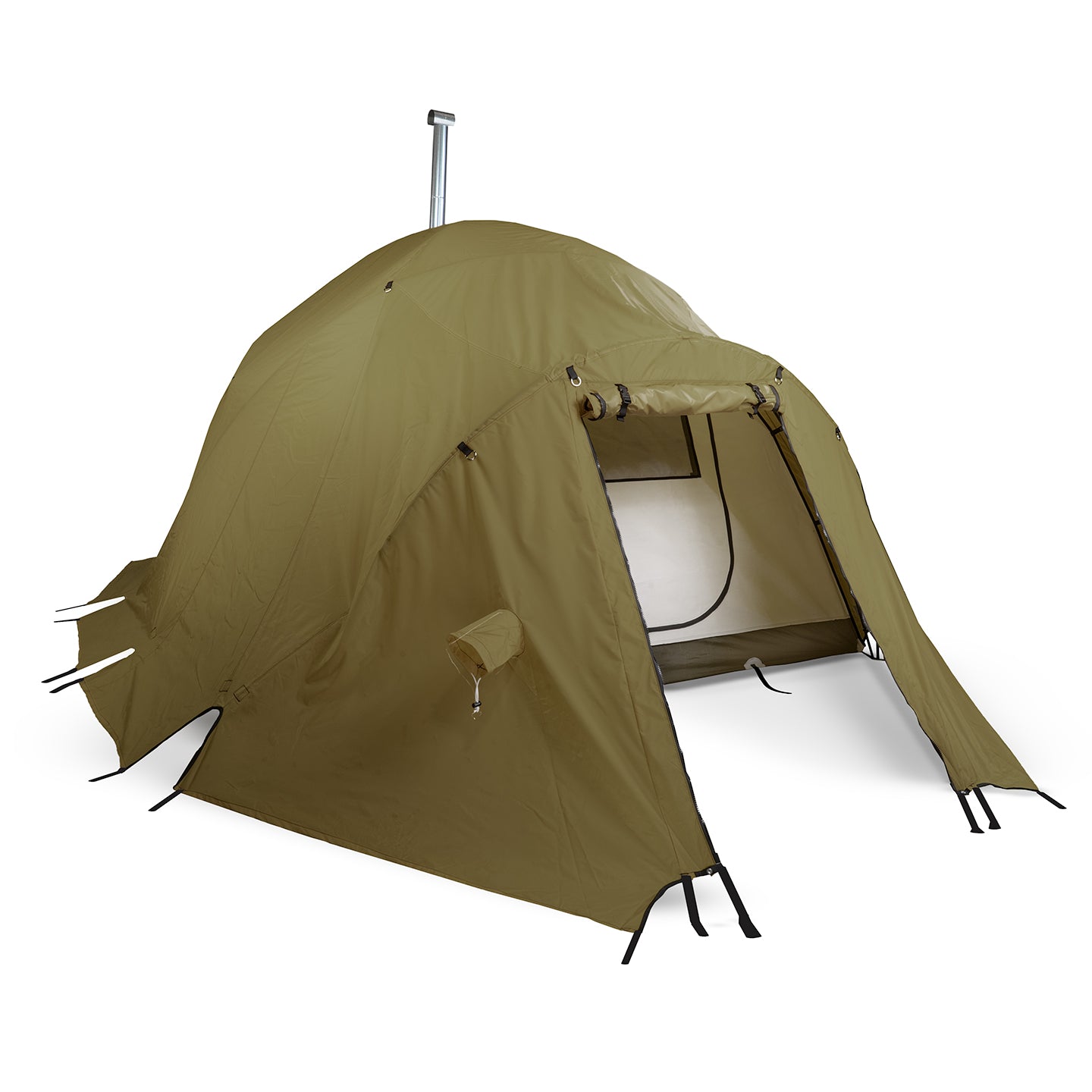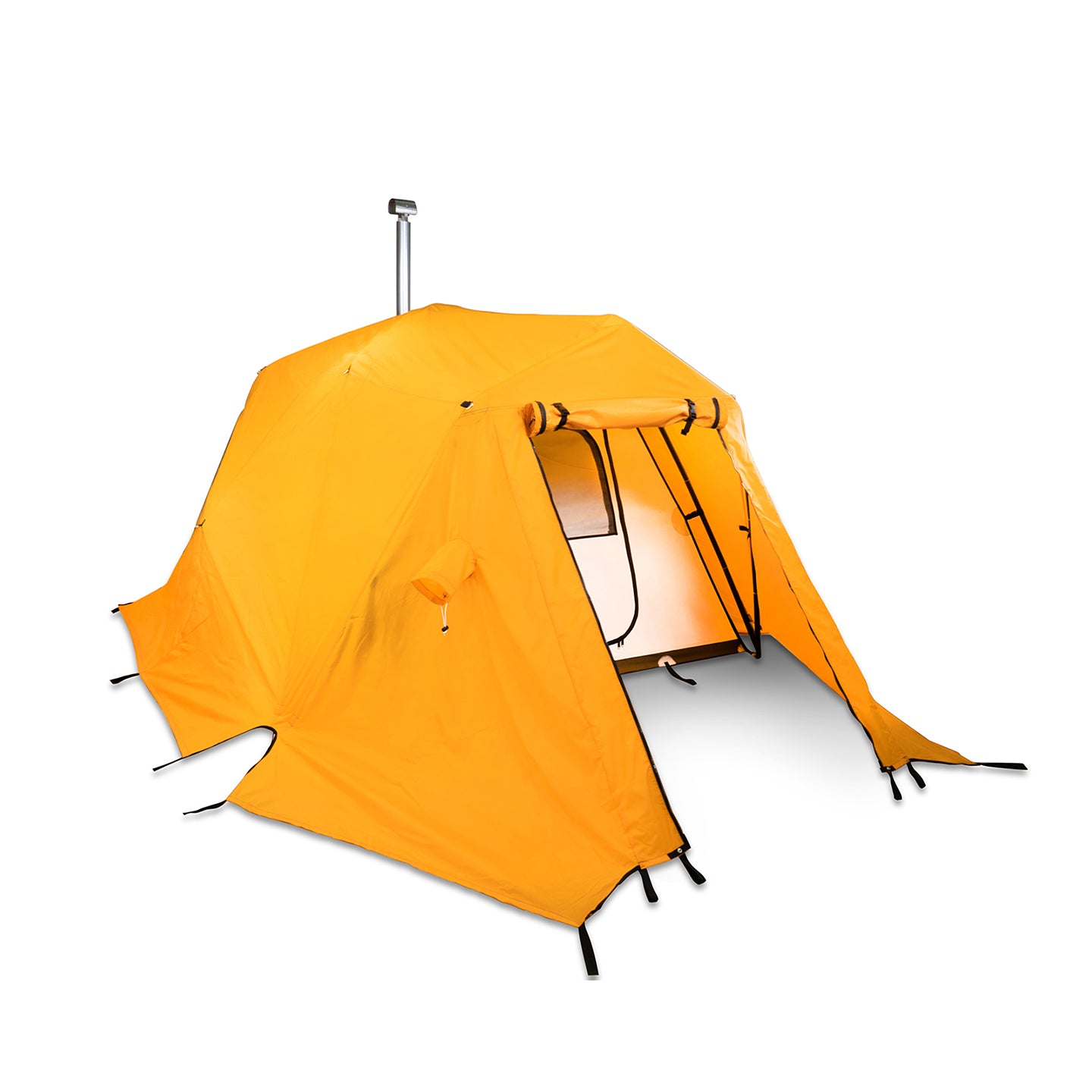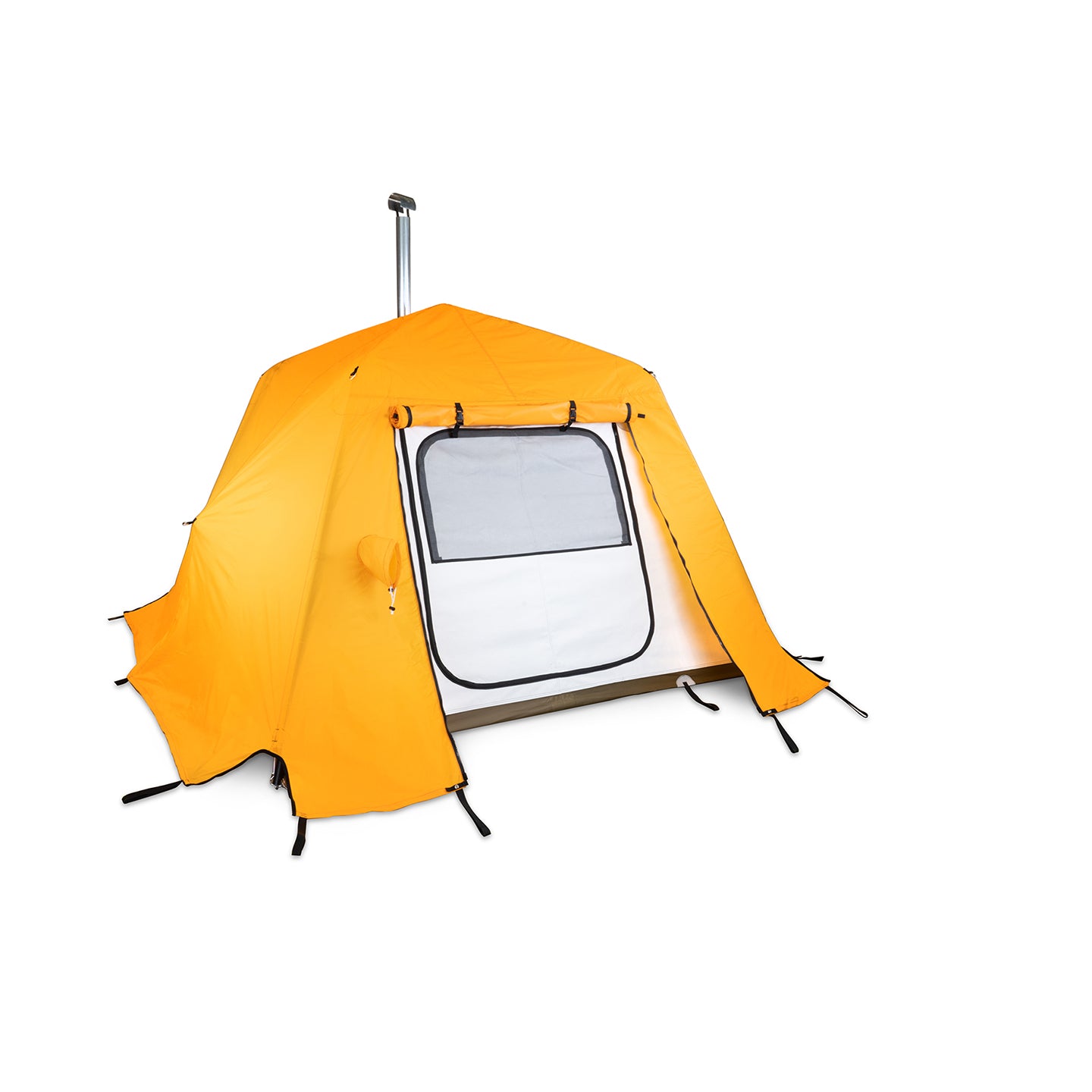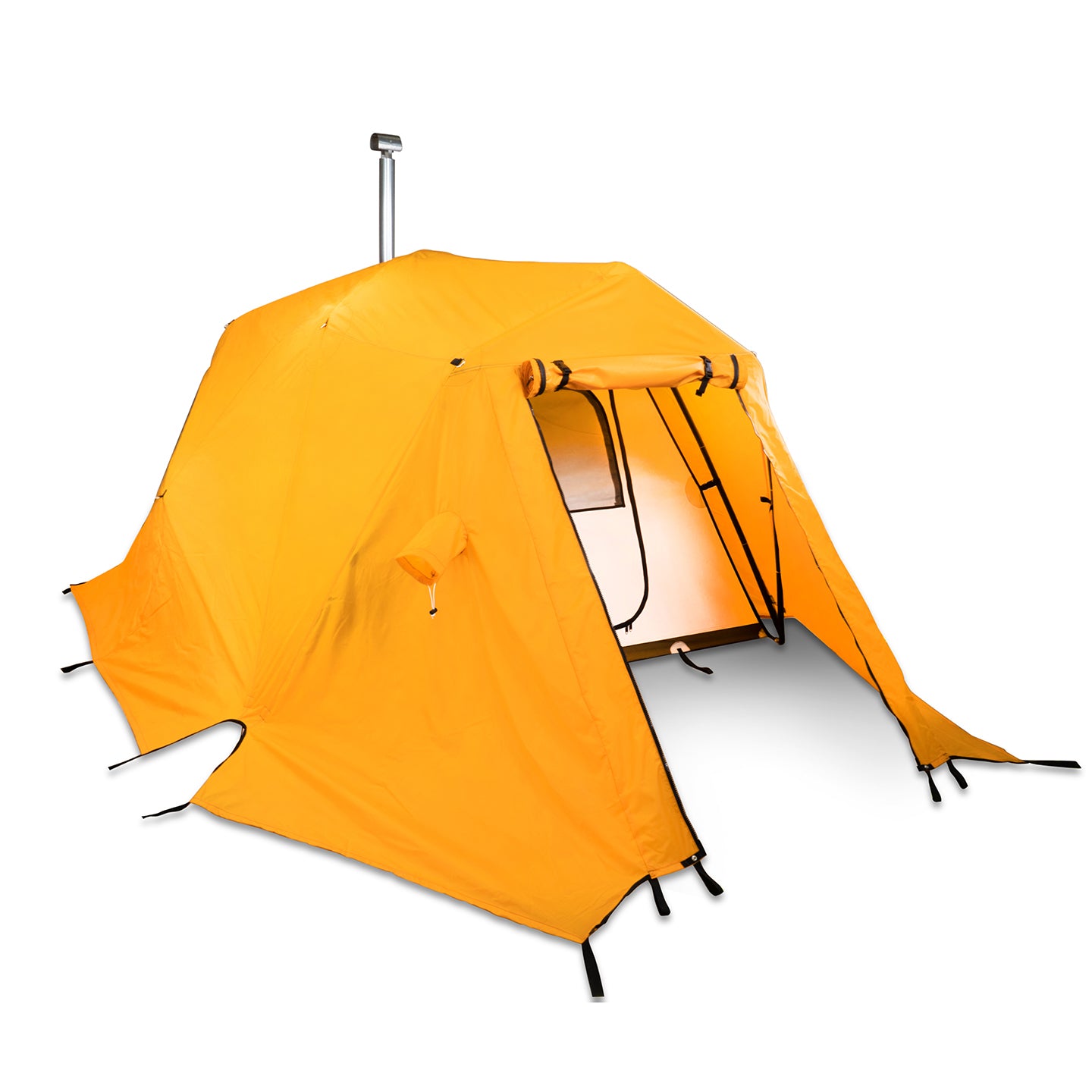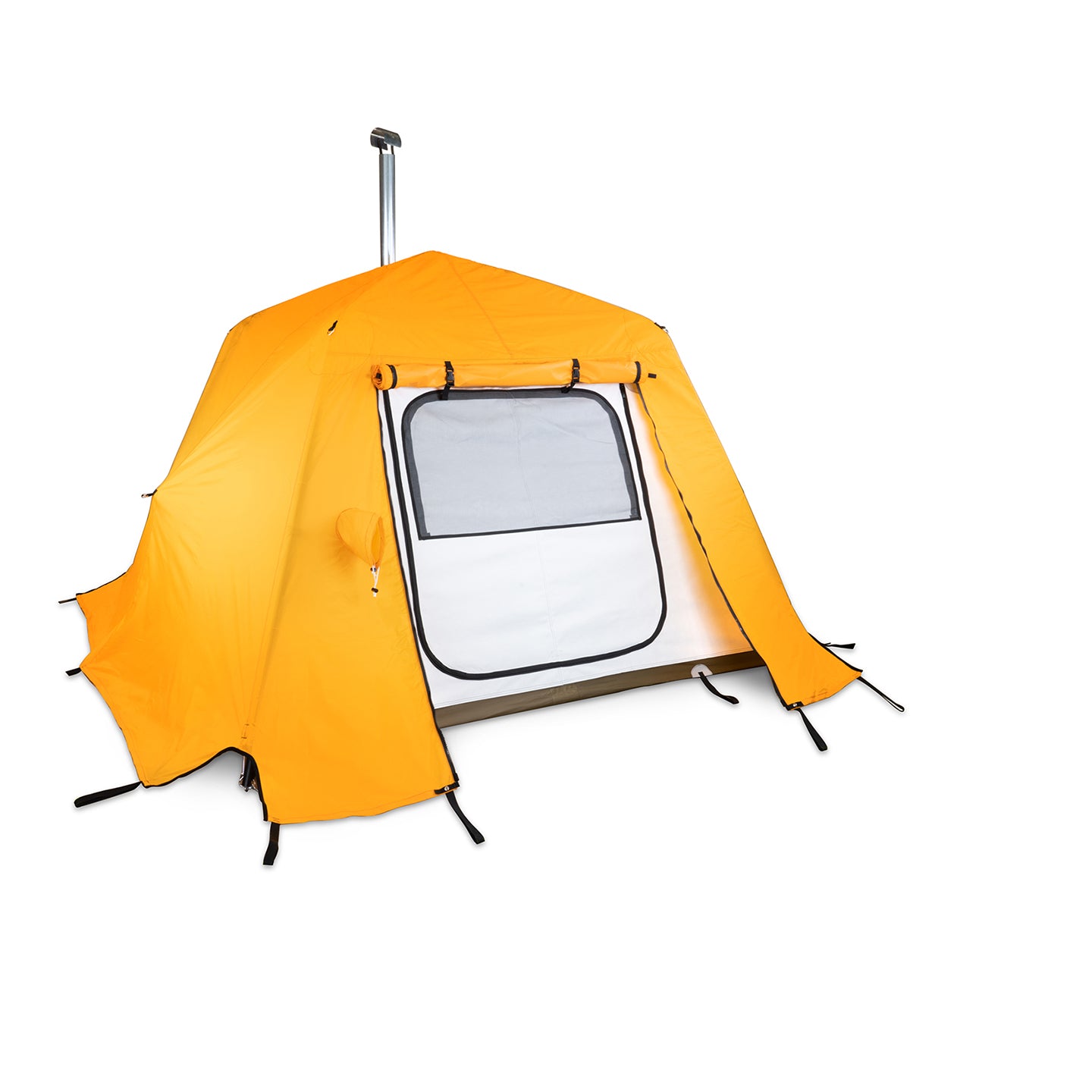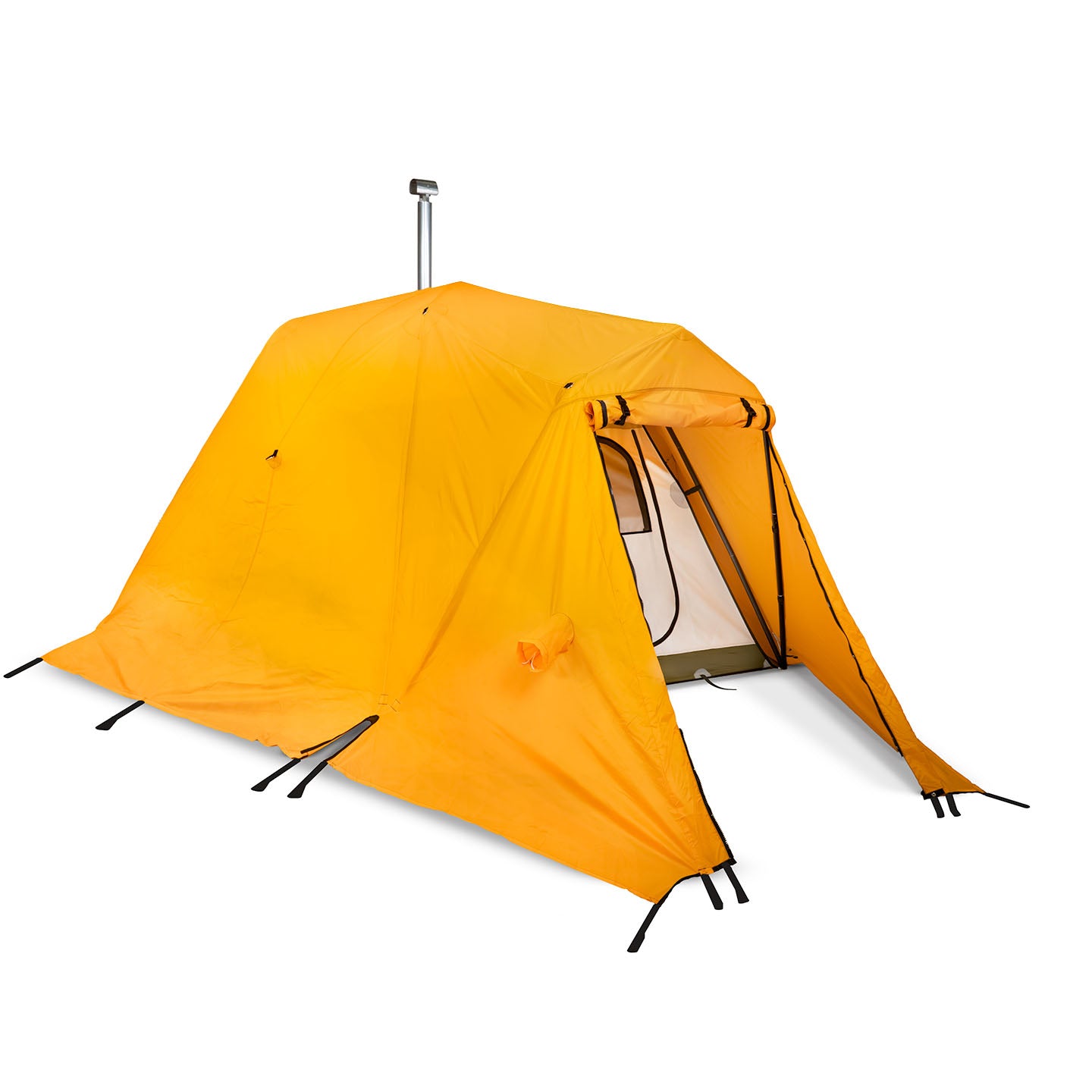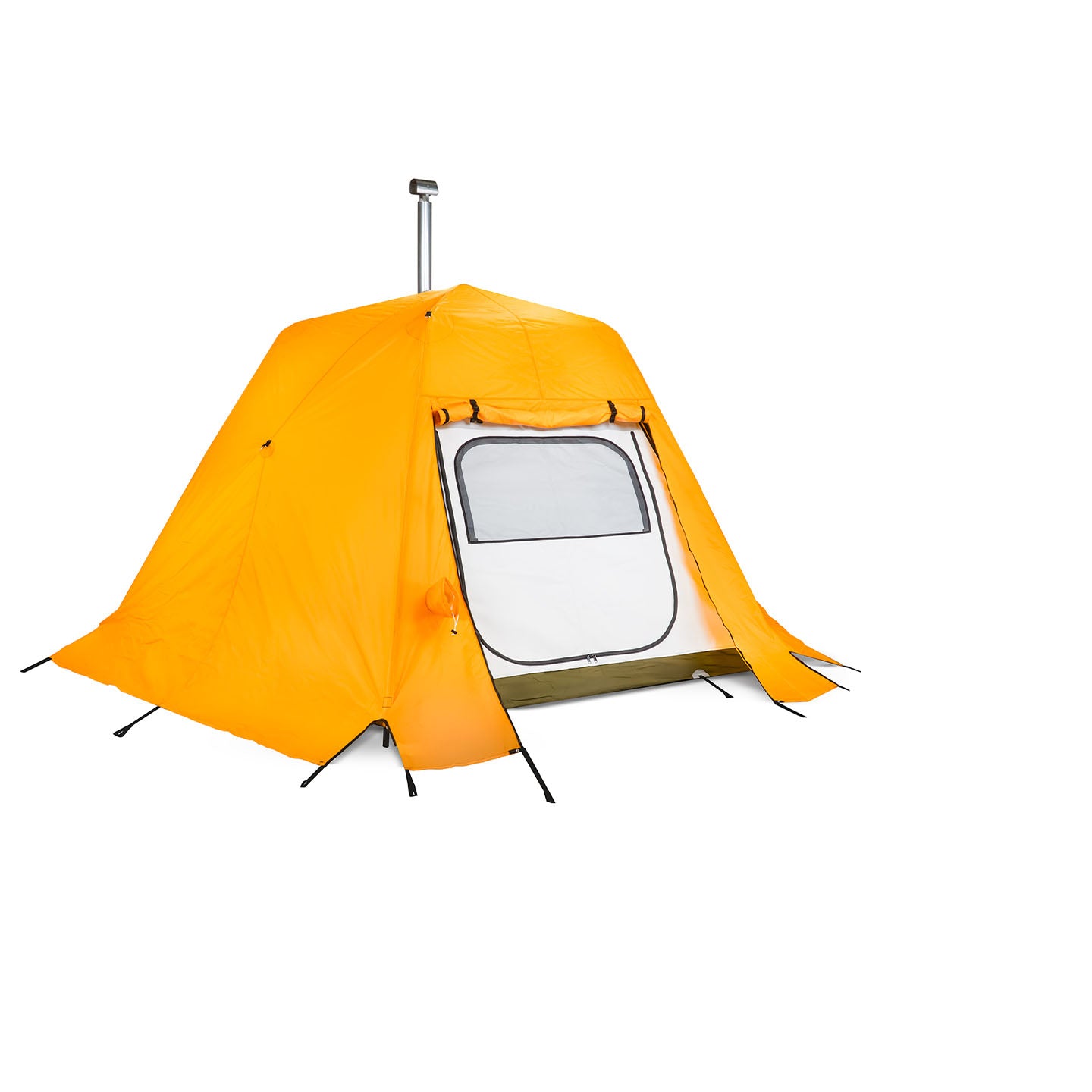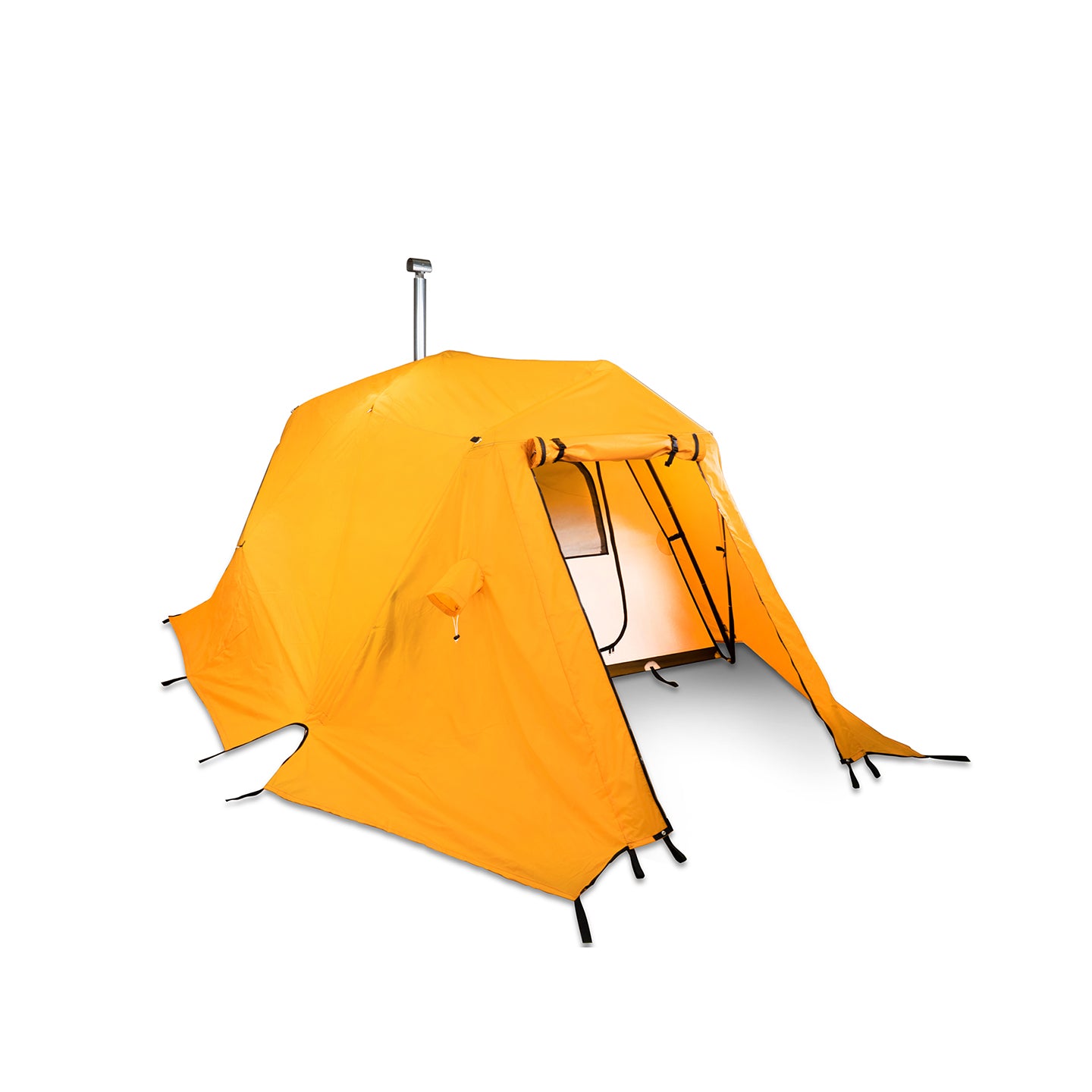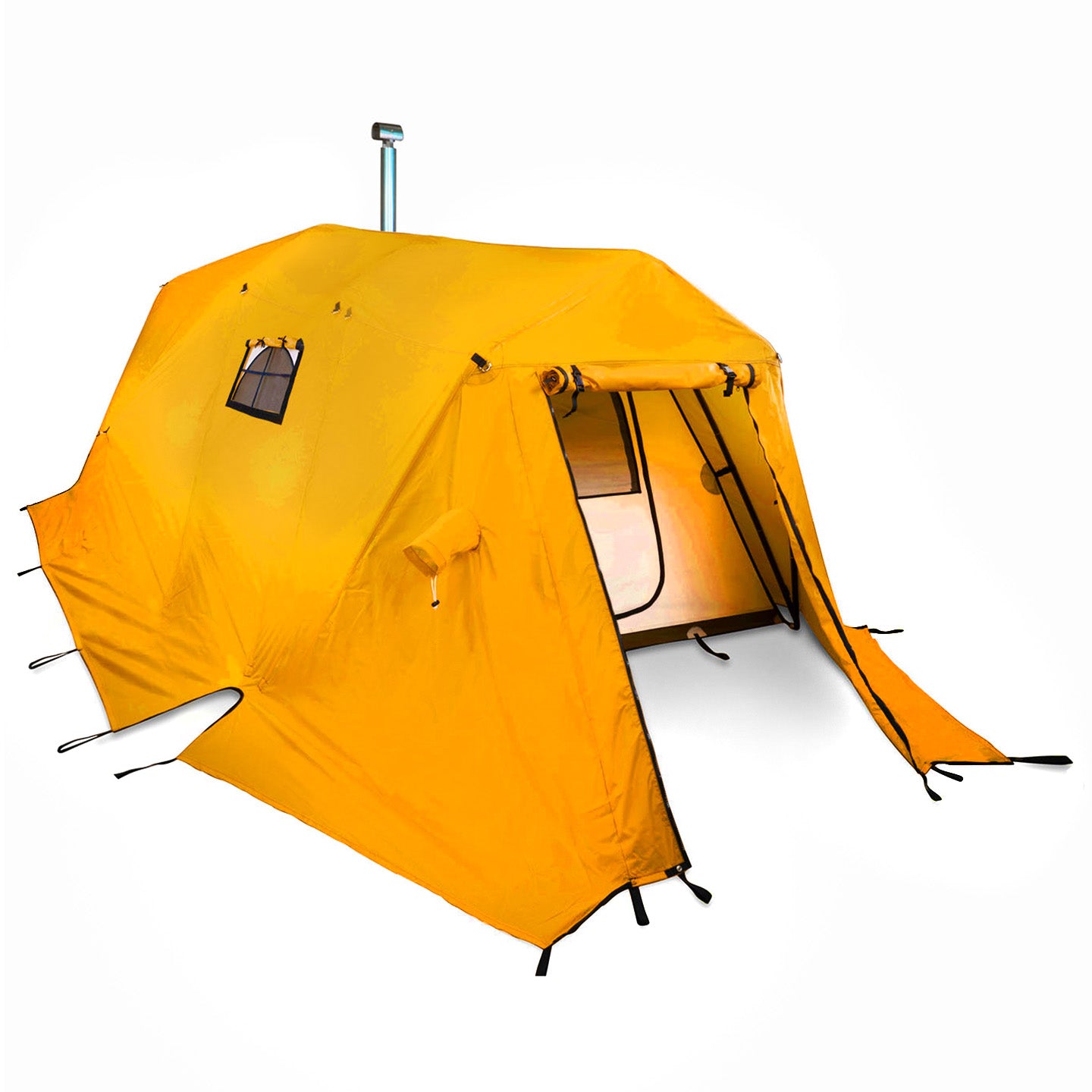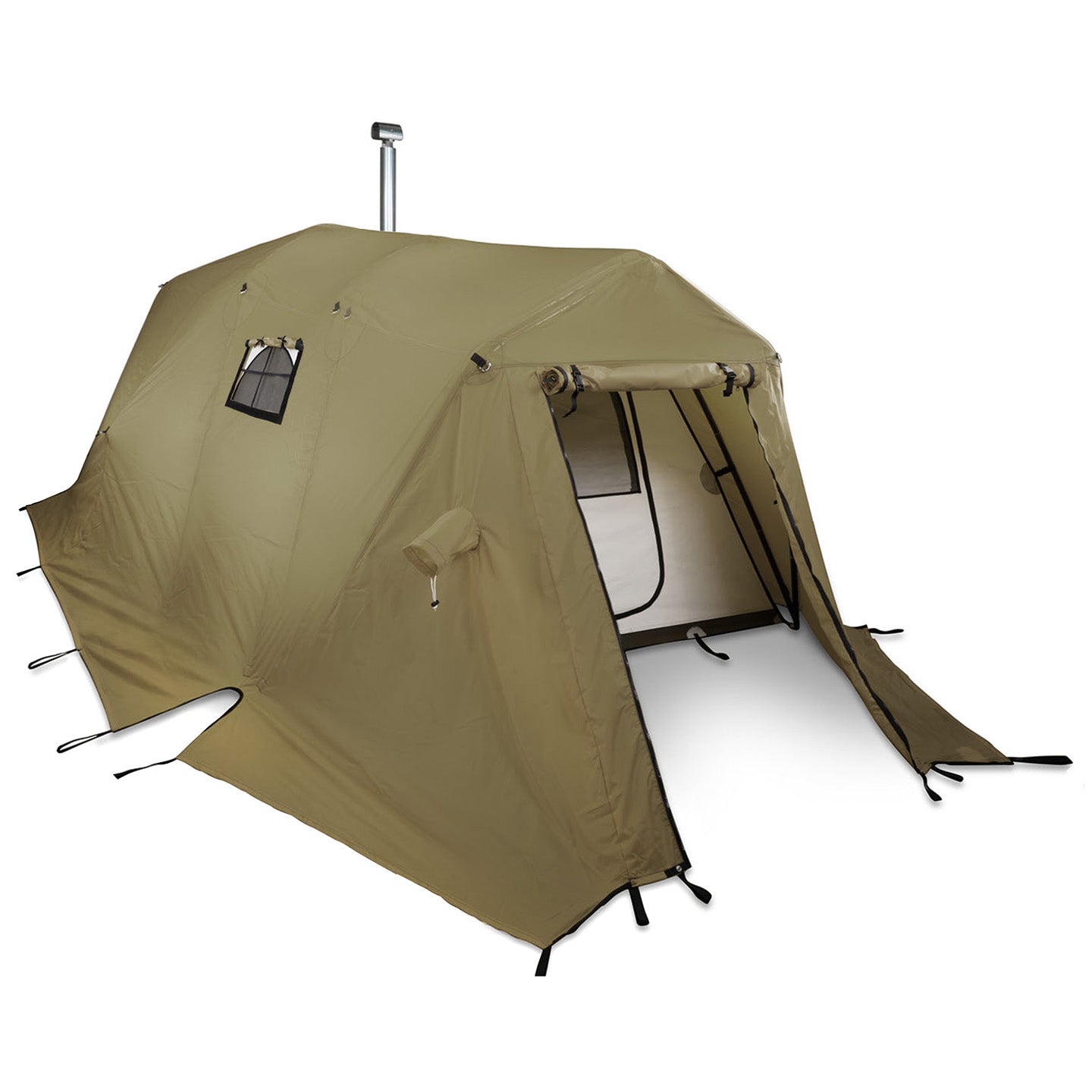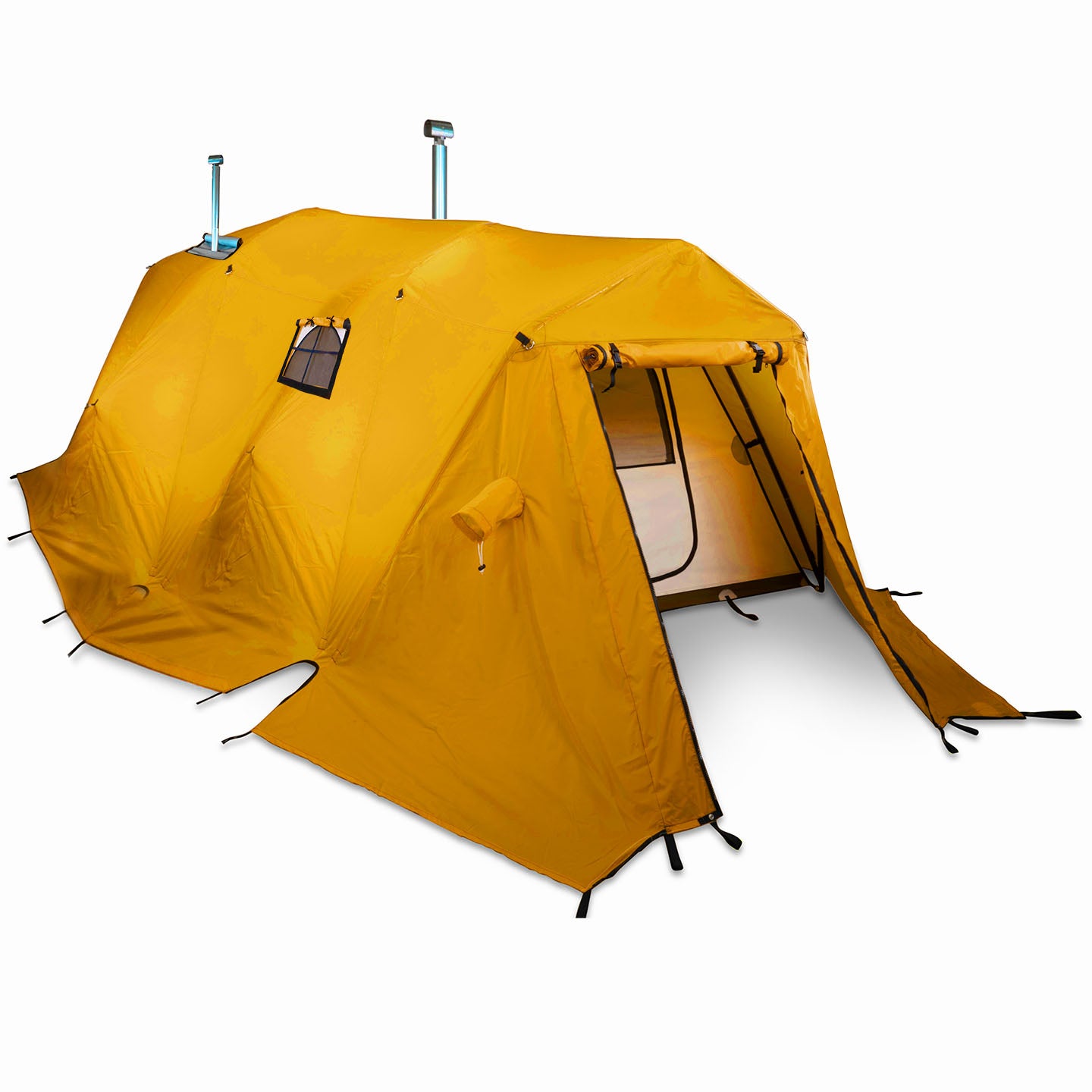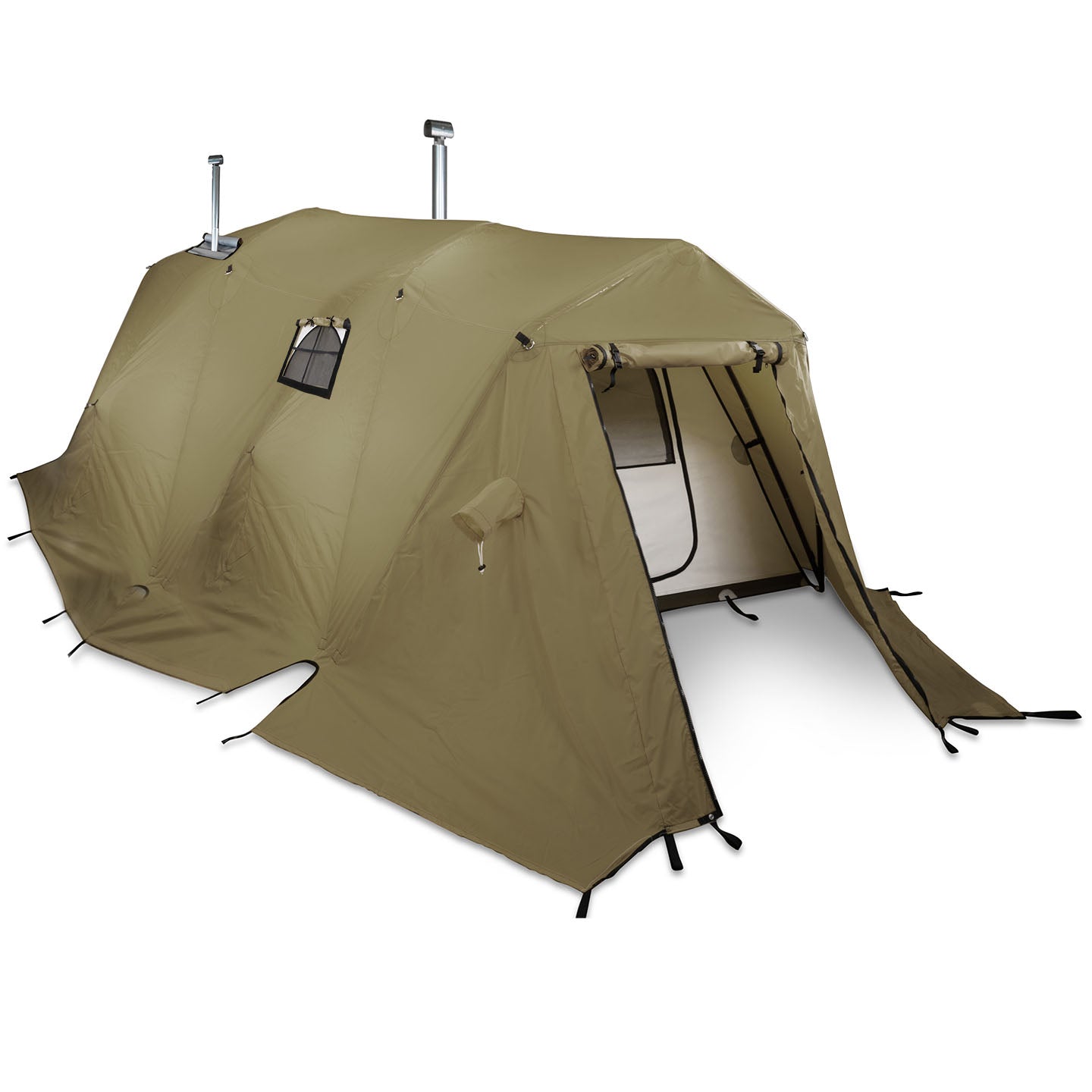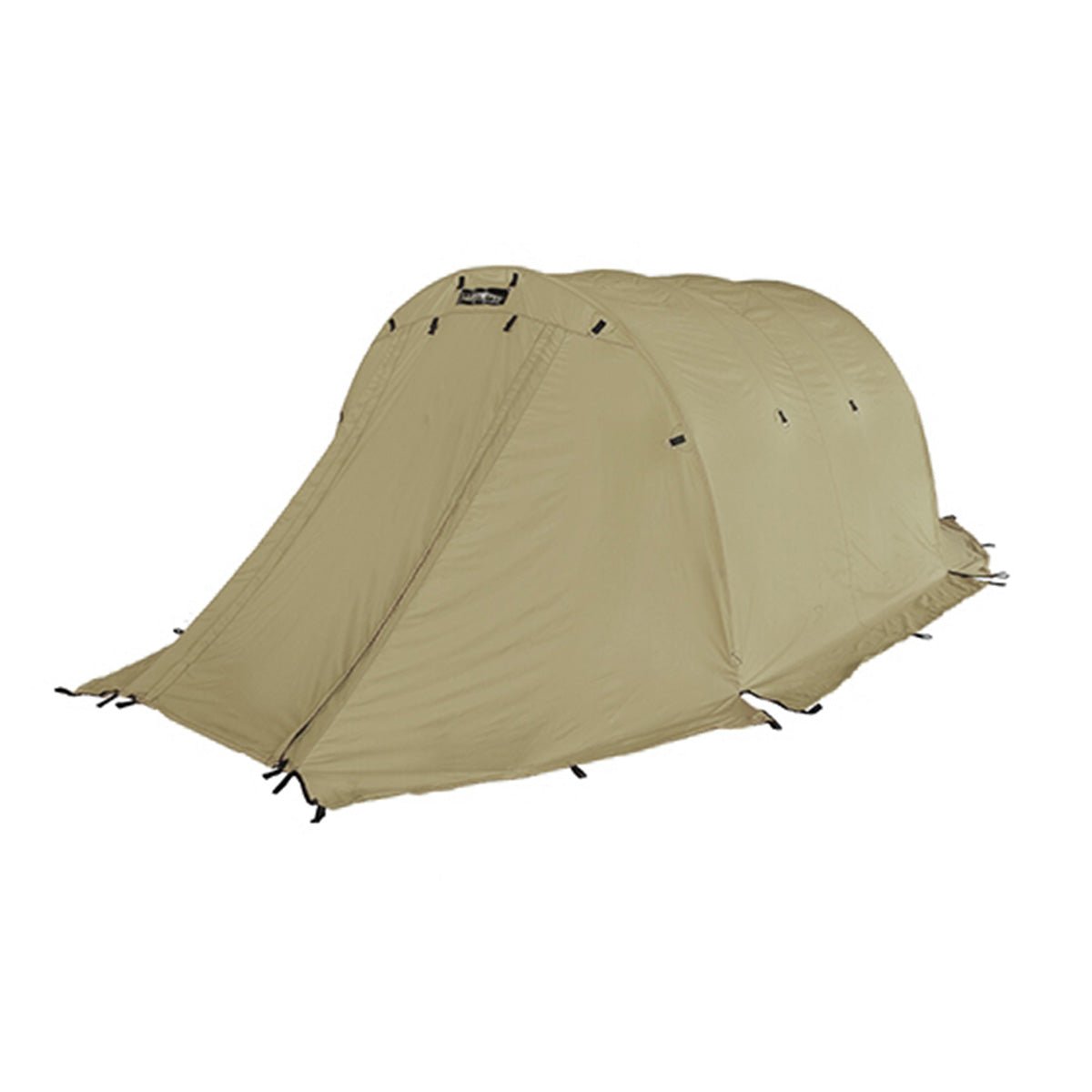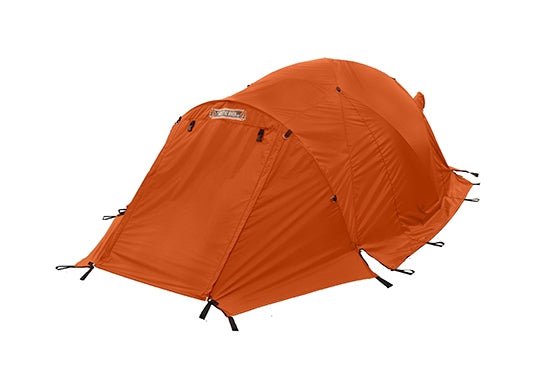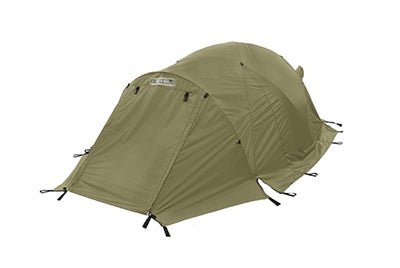



A hot tent is the best selection for winter camping, featuring a stove jack and proper ventilation to safely accommodate a wood-burning stove inside. Whether searching for a true winter tent, or something to make your four season adventures comfortable year round, unlike standard tents, hot tents provide a warm and dry shelter with 8 important characteristics. A real hot tent should have a high-temperature stove jack, fire resistant rated fabric, air ventilation systems, moisture control, double-wall construction, a cold-resistant floor, all-weather durability, and a livable layout.
No, only tents equipped with a high-temperature stove jack (a heat-resistant port for stove pipes) are safe for wood stove use. Using a stove in a non-stove-rated tent can be hazardous due to fire risks and improper ventilation.
There are three main types of stoves you can use in a hot tent: wood-burning stoves, propane stoves, and diesel drip stoves—each with their own strengths depending on your needs and the conditions.
In all cases, make sure your stove is compatible with your hot tent, including a proper stove jack, heat shielding, and adequate ventilation. With the right setup, any of these stove types can keep your hot tent warm, safe, and comfortable—no matter the season.
Hot tents are typically made from durable, fire-resistant fabrics and include a stove jack crafted from fireproof silica glass. One common challenge with hot tents is condensation buildup inside the tent. To address this, manufacturers have adopted innovative materials like Vapex—used in Arctic Oven tents—which provide insulation, durability, and resistance to the heat produced by wood stoves.
Yes, hot tents are designed for four-season use and offer comfort and protection year-round. While they shine in winter—thanks to their ability to safely house a wood-burning stove—they’re just as useful in spring, summer, and fall. Most hot tents come with stove jack covers and adjustable vents, allowing you to seal off the stove port and manage airflow when you don’t need a heat source. This makes them a versatile option for unpredictable weather, high elevations, or damp conditions where staying dry and comfortable matters. Whether you’re sheltering from snow or sudden summer rain, a hot tent gives you reliable, all-season performance.
Set up the tent and shake out any loose debris. Use lukewarm water and a mild, non-detergent soap with a soft cloth to spot clean the floor, zippers, and stove jack. The tent body can be gently soaked with mild soap, and in more severe cases, a small amount of mold and mildew cleaner may be used. After soaking and light scrubbing, rinse the tent thoroughly. For a rain fly, a light rinse and gentle scrubbing should suffice; soap is typically not necessary. Hang the tent to dry completely before storing. Store in a cool, dry location using a breathable storage bag.
Many wood stoves feature flat tops, making them perfect for cooking meals or boiling water—allowing you to stay warm and prep food simultaneously. For the best experience when cooking inside your hot tent, ensure it includes built-in moisture mitigation to reduce condensation and maintain comfort.


